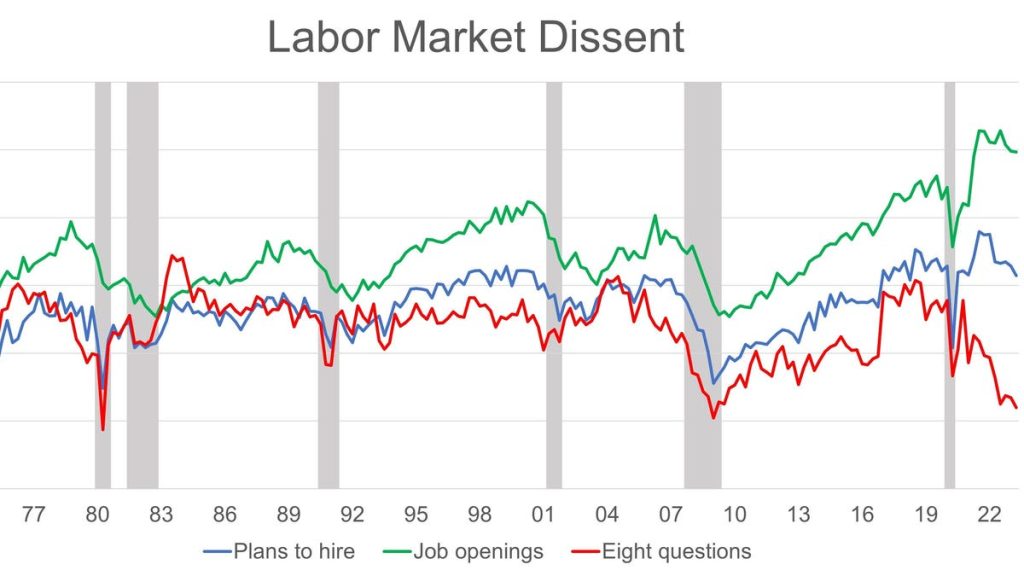Economists have been talking “recession” for over a year, but the recession refuses to show up. Historically reliable recession indicators have anticipated a recession all year (Yield Curve, Leading Indicators etc.), but it’s a “no show.” Chart 1 shows the labor market indicators tracked by the NFIB for 49 years. Reported job openings and plans to hire have held at record high levels all year, while all other indicators collapsed. This has kept the NFIB Small Business Optimism Index much higher than it would have been with those two Index components at more typical levels.
As Chart 2 shows, absent the two labor market components, the Index is about as low as it has ever been in 49 years (eight components vs all 10). The Index less the labor components was lower only in 1980.
The strongest indicator, job openings, has rarely dipped below 10% and reached nearly 50% in recent months. Owners are always looking for workers to fill positions but have historically never been this short of workers. In the most recent quarter, 60% said they were searching for employees and 43% reported no qualified applicants. A dearth of qualified applicants makes it difficult to fill open positions, even with historically high percentages planning to increase compensation (a net seasonally adjusted 21% last quarter, down from 27% a year earlier).
Chart 3 shows how successful firms have recently been in getting new workers on board: not very successful at all. The net percent of firms increasing employment over the past few quarters is best described as “0,” negative in the most recent quarter. Staffing our firms for growth has become a real problem, as population growth and labor participation rates have weakened. Complaints about the lack of qualified applicants also may reflect failures of our education system. Many young people have “graduated” without reaching appropriate competency levels. An increased incidence of drug use has also contributed to problems of “qualification” for many jobs.
Absent a stunning increase in worker productivity, the shortage of qualified workers is holding back economic growth. If small business owners could fill those open positions, output (GDP) and income would definitely expand. Virtually all industry classifications show significant numbers of firms unable to hire the workers they need. Finding solutions to the problems of labor supply will take time, holding back our rate of growth and employment.
Read the full article here










